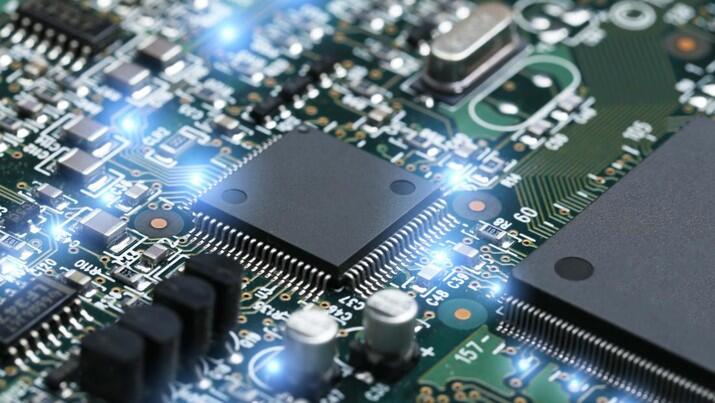12 September 2023 20:10
Ilustrasi Chip (Dok: Freepik) Foto: Ilustrasi Chip (Dok: Freepik)
Tech - Redaksi, CNBC Indonesia
Jakarta, CNBC Indonesia - Produsen chip asal Amerika Serikat, GlobalFoundries mengumumkan rencana penambahan kapasitas pabrik di negara tetangga RI, Singapura. Ekspansi tersebut bakal menghabiskan modal US$ 4 miliar.
GlobalFoundries menyatakan ekspansi di Singapura adalah langkah untuk menyesuaikan kemampuan produksi perusahaan terhadap permintaan yang tinggi secara global
"Saya yakin dalam dekade selanjutnya, industri ini bakal berlipat ganda lagi," kata CEO GlobalFoundries Thomas Caulfied kepada CNBC International, Selasa (12/9/2023).
Ia menyatakan aplikasi baru dan penting dari kecerdasan buatan akan mengubah dunia. Perubahan ini membutuhkan dukungan lebih banyak chip.
"[Permintaan dari industri] otomotif tetap kuat. Cloud untuk kecerdasan buatan juga kuat. Permintaan manufaktur bertahan. Semua terkait konsumer masih lemah," kata Caulfield.
GlobalFoundries adalah perusahan "pencetak chip" atau foundry yang bertindak sebagai produsen chip untuk perusahaan semikonduktor seperti Qualcom, Mediatek, dan NXP Semiconductor, yang memasok chip ke sekitar 200 pelanggan di seluruh dunia.
Chip produksi GlobalFoundry digunakan di dalam HP, laptop, mobil, sistem realitas virtual, video game, speaker, serta infrastruktur pendukung AI dan 5G.
Singapura sendiri adalah pemasok 11 persen dari semikonduktor yang digunakan oleh produsen elektronik di seluruh dunia.
TSMC asal Taiwan dan Samsung asal Korea Selatan adalah dua perusahaan foundry terbesar dunia di atas GlobalFoundry yang ada di posisi ketiga.
"Sebagai fasilitas semikonduktor paling canggih di Singapura, ekspansi ini menambah kapasitas produksi sebanyak 450 ribu wafer [300 mm] setiap tahun sehingga kapasitas produksi menjadi 1,5 juta wafer (300 mm) setiap tahun," kata GlobalFoundries dalam siaran persnya.
Fasilitas produksi chip baru akan menciptakan 1.000 lapangan kerja baru bergaji tinggi di Singapura, sebagian besar bertindak sebagai teknisi dan insinyur. Saat ini, GlobalFoundries mempekerjakan 4.500 orang di Singapura.
GlobalFoundries termasuk dalam delegasi AS yang ikut ke Hanoi, Vietnam bersama Presiden AS Joe Biden. Biden dikabarkan berusaha meningkatkan peran negara lain sebagai pemasok chip untuk mengurangi ketergantungan industri teknologi global terhadap China.
(dem)
Quote:
Modi Wants to Make India a Chip-Making Superpower. Can He?
India’s government, seizing on the world’s desire to reduce reliance on China, is offering billions to build an entire semiconductor ecosystem on vast empty plots.
Sept. 13, 2023
 Alex Travelli
Alex Travelli
By Alex Travelli
Reporting from New Delhi, Gandhinagar and Dholera
In his office in New Delhi, Ashwini Vaishnaw, the Indian minister of electronics and information technology, keeps a 12-inch disc of silicon semiconductor on the wall, gleaming like a platinum record beside a portrait of Prime Minister Narendra Modi. Its circuits, measured in nanometers and invisible to the human eye, may be the most sophisticated objects ever made. It vies with oil as one of most valuable traded goods on earth.
According to India’s government, the microprocessor chips that power all things digital will soon be fully made in India. It’s an ambition as unlikely as it is bold, and speaks volumes about Mr. Modi’s belief that he can propel India into the top tier of advanced technology manufacturing.
In July, a legion of fawning foreign businessmen lined up onstage behind Mr. Modi in his home state of Gujarat. About $10 billion in subsidies are at stake, ready to fund 50 percent or even 70 percent of any company’s outlay. Anil Agarwal, the chairman of Vedanta, a British mining and metals group, told reporters to expect “Vedanta made-in-India chips” by 2025.
They have set their sights on a barren plain in Gujarat, Dholera (DOE-lay-rah), designated the future home of India’s first “semicon city.” It’s the size of Singapore. Slicing through sodden fields, ruler-straight new roads connect planning offices to power stations, freshwater canals from a diverted river and the gargantuan outline, traced in the dust, of an international airport. Dholera’s vast grid is otherwise virtually empty.[/b]
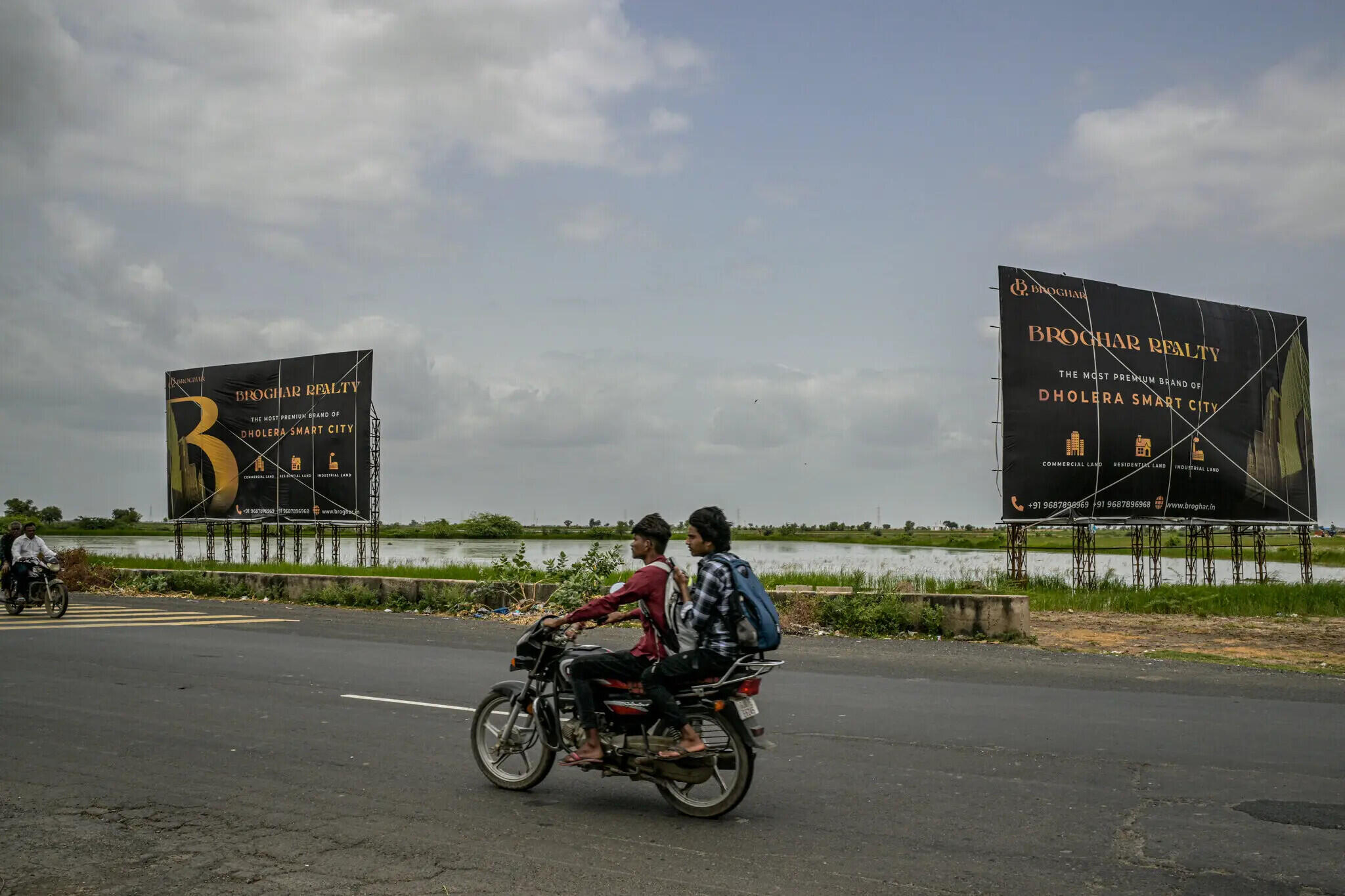 ImageTwo people ride on a motorbike with two real estate billboards along the side of the road, bordering a marshy area.
ImageTwo people ride on a motorbike with two real estate billboards along the side of the road, bordering a marshy area.Advertisements for the Dholera project, which is in the early stages of development.Credit...Atul Loke for The New York Times
Investment in infrastructure like a robust power grid is one feature meant to lure businesses.Credit...Atul Loke for The New York Times
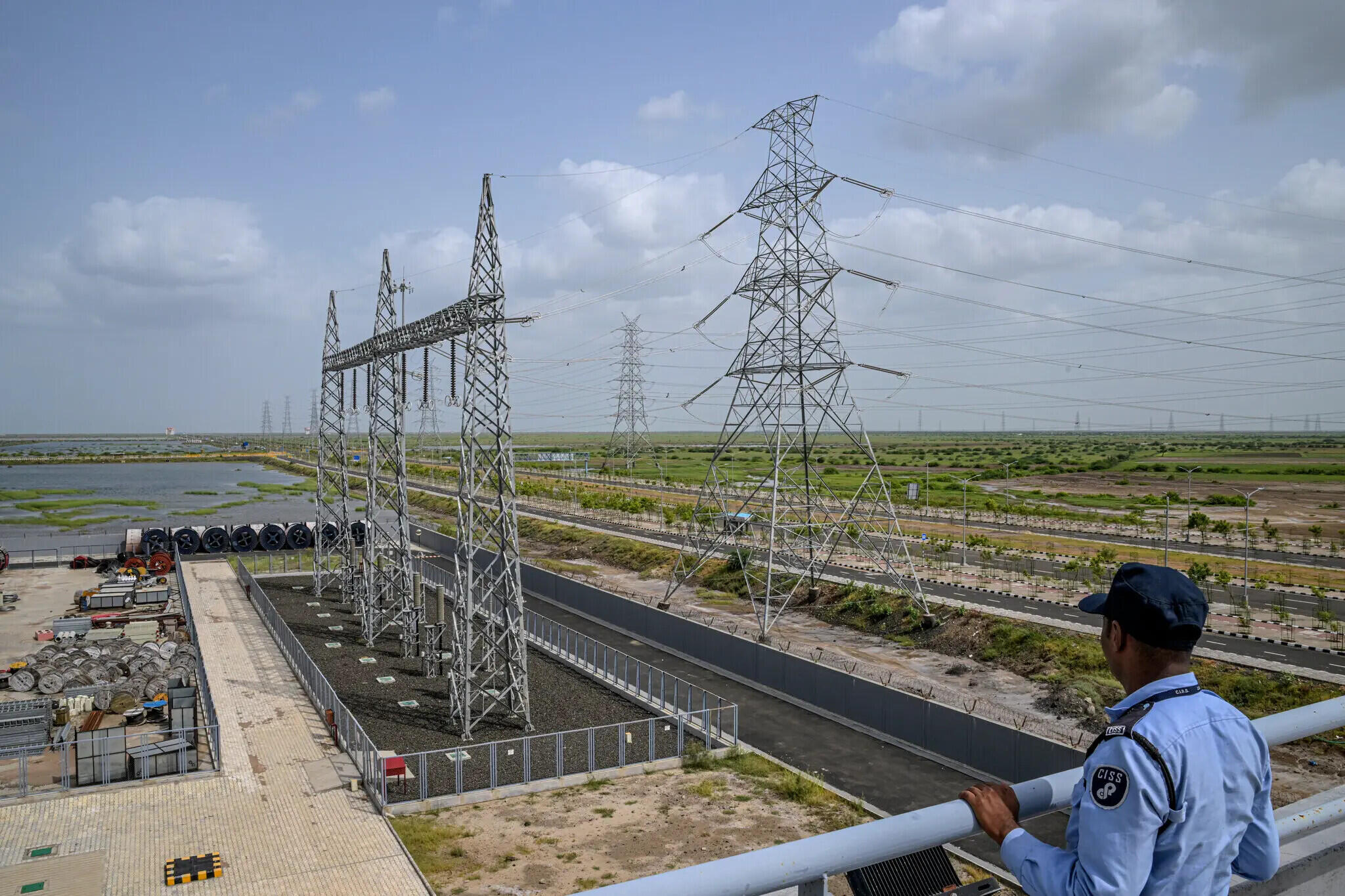
A security officer wearing a light blue uniform shirt and dark blue billed cap overlooks a vast space with electricity transmission towers.
Mr. Modi is betting he can lure private companies here, the middle of nowhere even by Indian standards, from not only across India but the world.
India’s traditional tech clusters around Bengaluru, a two-hour flight to the south, have established the country in the global semiconductor network by their work in designing chips, but not in making them. And in the past two years the government has laid heavy subsidies into making the country an electronics manufacturer.
Actual chip-making is another challenge entirely.
Since 2020 Mr. Modi has used “production-linked incentives” — the more you make, the bigger your government handout — to persuade mobile phone manufacturers to assemble more units in India than in any other country but China. But such work can be performed with semiskilled labor in ordinary factories. Chip-making, in its difficulty, occupies the opposite end of the spectrum.
Today nearly all cutting-edge logic chips are made in Taiwan. As anxieties about China flare, and chips become more integral to every kind of technology, that seems increasingly risky to buyers and sellers alike. The Taiwan Semiconductor Manufacturing Company, founded in 1987 by the chip legend Morris Chang, has been struggling to help America get its own fabrication plants or “fabs” going in Arizona, with help from President Biden’s subsidy-infused CHIPS Act.
India has no history of fabbing chips and virtually none of the hyperspecialized engineers and equipment needed to start. Still, it says it will make them here — and soon. It took TSMC and other Taiwanese companies decades, driven by government spending and countless billions in capital investment, to get where they are.
Since last October, when the United States decided to hobble the Chinese chip industry’s access to Western tools and workers, China has invested heavily on its own chip makers, vastly more than India has to spend on its companies.
Mr. Agarwal of Vedanta, the conglomerate that hopes to launch India’s first semiconductor foundry, believes he can start making chips in two and a half years. To lead the charge he has hired David Reed, a veteran of chip-making firms around the globe including, like Mr. Chang, Texas Instruments, the American company that once was a world beater in chips.
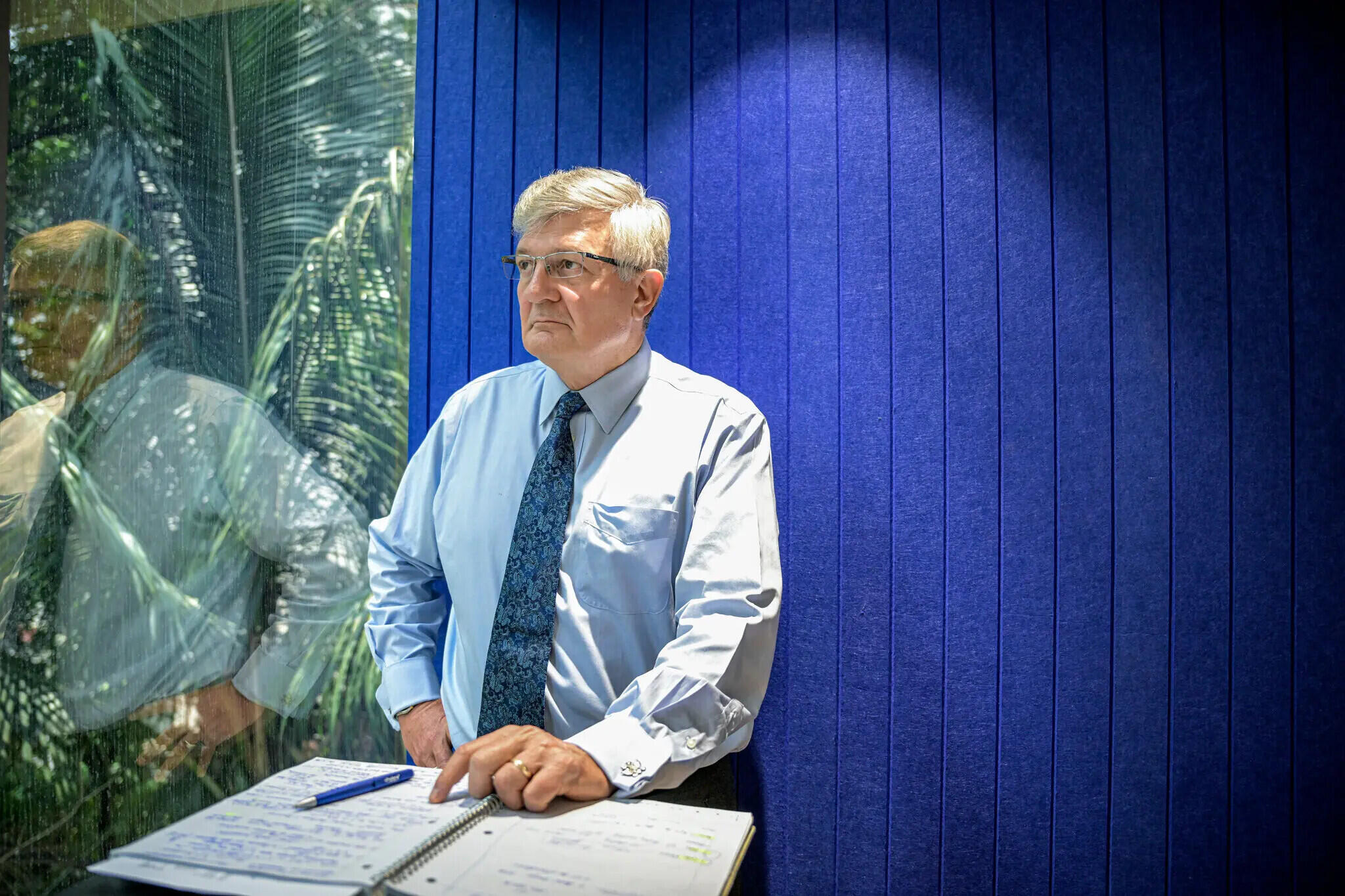
David Reed, wearing glasses and a light blue shirt and dark blue tie, stands against a deep blue wall, his reflection shown in a window to his right.
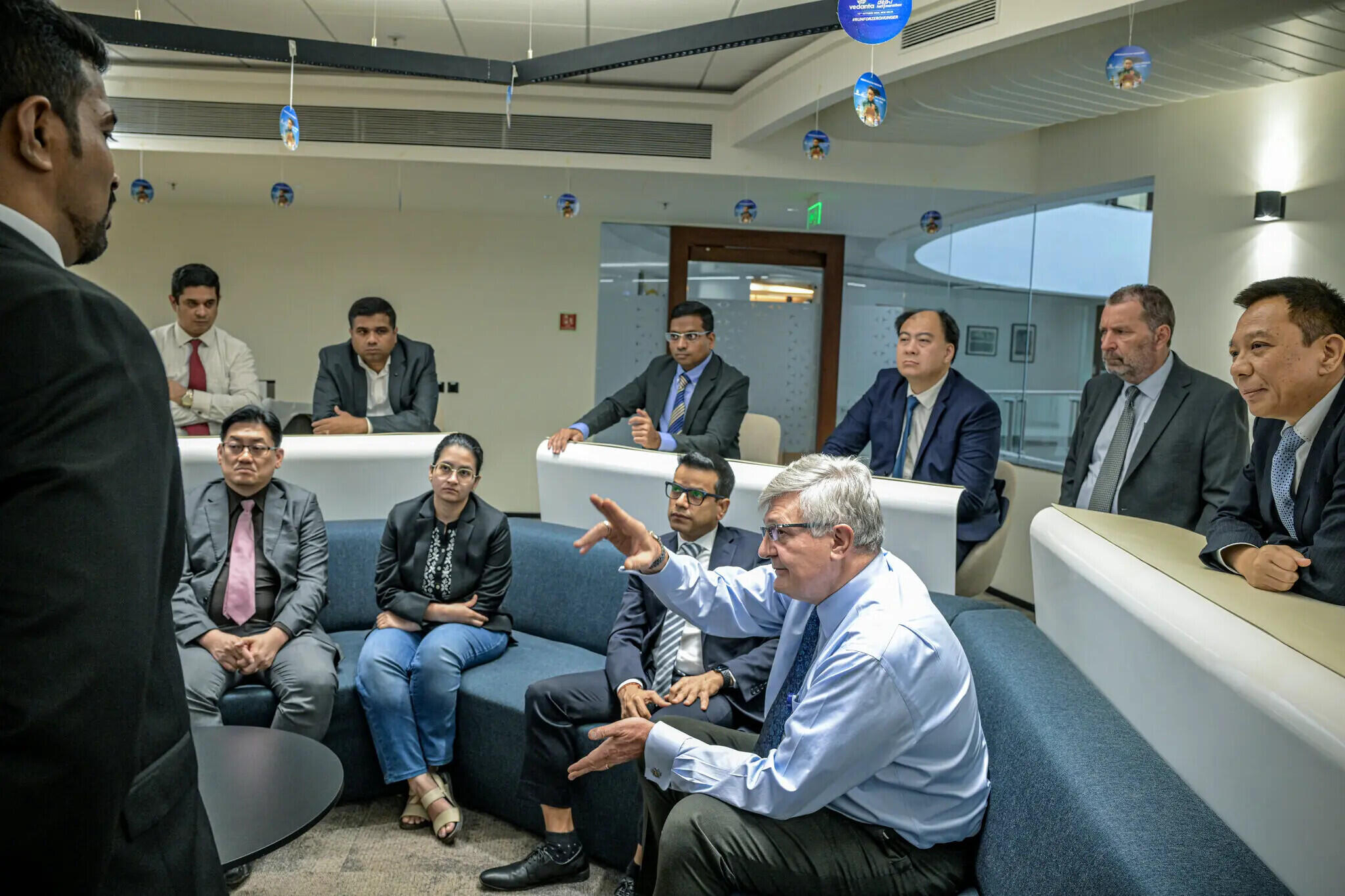
Mr. Reed, a natural leader with a genial manner, intends to use his connections within the tightknit chip-making community. His assignment: Lure about 300 foreign specialists from fabs in East Asia and Europe to come and live in rural Gujarat and build a complex from scratch. He is having to offer his new hires three times (“3x,” he says quietly) their current salaries. They will be “mirrored” by an equal number of Indian staff, who will eventually take the reins.
Ultimately the Mr. Reed’s hardest task may be persuading established players within the East-Asian-centric ecosystem to move to a place where they and their families had never considered living. The land-and-power infrastructure he finds in Gujarat will be appealing to his expatriate hires, but the housing, schools and nightlife are a work in progress. Yet, the homegrown candidate pool makes him optimistic: India graduates more than 1.4 million engineers a year, including many of the highest quality, just as Taiwan is running short of fresh talent.
Making microchips also requires a lot of bespoke ingredients. Mr. Vaishnaw, the government official in charge, said India’s biggest chemical plants were near Dholera and could pump out the specialized gases and liquids needed to run any chip fab. Seaports and railheads can ensure high levels of connectivity.
India’s technology scene is exulting in the limelight. Its Chandrayaan-3 lunar lander reached the south pole of the moon in late August. Mr. Modi saw the Group of 20 summit as a platform to show off India’s digital-public infrastructure.
Even more of the urgent interest in India’s making chips has to do with China, which is not the draw for investment that it was for the past three decades. Mr. Modi has been telling nations not aligned with Beijing that India has an important role to play in “building a trusted supply chain.”
Image
Materials strewn about at the site of highway construction, and two partly completed elevated roadways.
Road construction in Dholera, an area the size of Singapore.Credit...Atul Loke for The New York Times
Materials strewn about at the site of highway construction, and two partly completed elevated roadways.
Image
Two workers wearing yellow hard hats, one crouching in front of a large section of piping.
Workers building a factory that will make solar panels and modules in
It was in 2015, early in Mr. Modi’s first term as prime minister, that he announced a “Make in India” program, the broader industrial push that frames the current chips initiative. But as a share of the economy, manufacturing has since languished, stuck around 15 percent. Smaller Asian countries, like Bangladesh and Vietnam, have run circles around India in most categories, exporting greater quantities of goods like garments and electrical equipment.
India excels in the export of intellectually demanding services and in “deep tech.” With the notable exception of pharmaceuticals, its manufacturing firms have mostly failed to compete in the international arena.
Some business leaders — and not only Mr. Modi’s naysayers — argue that India’s government, in identifying logic-chip foundries as its goal, has bit off more than it can chew. Certainly the time frame announced by Mr. Agarwal’s Vedanta is highly ambitious, if not implausible. That does not mean there aren’t gains to be made: Expanding India’s role within the world’s chip supply chain looks like a much better bet. Indian officials don’t put it this way, but it’s a kind of Plan B to Mr. Modi’s chip-making moonshot.
For example, Micron Technology, a memory-chip firm based in Boise, Idaho, has committed $2.7 billion to another industrial site in Gujarat, 60 miles from Dholera. It is supposed to become a locus for ATMP work, chip jargon for “assembly, testing, marking and packaging.” These are the advanced processes integral to making modern chips powerful.
Malaysia does some of that kind of work now, and India could nibble away at its market there while doubling down on chip design.
Whether these plans succeed or fail, they make apparent a giant scale of ambition. They also make it clear that India sees a muscular role for the state, with a mixture of tariffs and subsidies to help its national champions off the ground and into global competition. That kind of state capitalism puts it in company with China, but also the United States and other big countries that have belatedly engaged in versions of the same. And that, in the end, might be Mr. Modi’s supreme goal.
SumberWho ?
India ?
Oh, They can.. 🤣
Quote:
Vietnam Produksi Chip Semikonduktor Mandiri, RI Bagaimana?
28 September 2022 16:55
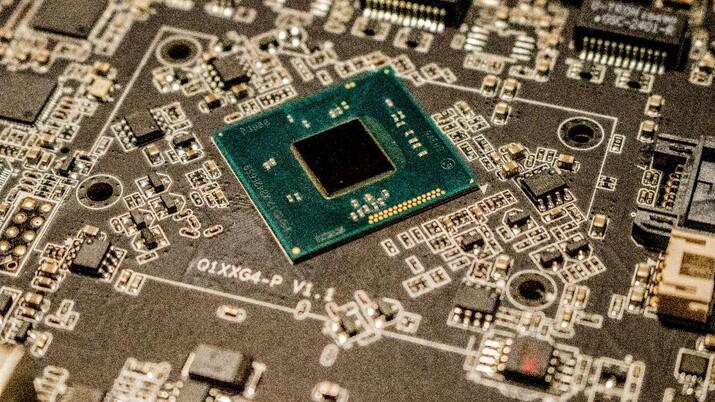
Foto: Ilustrasi chip (Photo by Jeremy Waterhouse from Pexels)Tech - Intan Rakhmayanti Dewi, CNBC Indonesia
Jakarta, CNBC Indonesia -Vietnam kembali membuat kejutan pasca membuka ekonominya sejak 1986. Negara tetangga Indonesia bersiap menjadi salah satu produsen chip semikonduktor yang banyak dibutuhkan oleh perangkat elektronik.
Adalah FPT Semiconductor, sebuah unit dari perusahaan teknologi terkemuka Vietnam FPT, yang meluncurkan lini pertama chip semikonduktor yang digunakan dalam perangkat medis. Ini sebagai bagian dari upaya perusahaan untuk memasuki industri global yang kompetitif. .
Perusahaan itu menargetkan memasok 25 juta chip secara global pada tahun 2023 dan mengincar Jepang, Taiwan, China, dan Amerika Serikat sebagai pasar utama, tulis perusahaan dalam keterangannya seperti dikutip dari Reuters, Rabu (28/9/2022).
Dilansir dari website Astra Honda, Chip semikonduktor merupakan bahan utama untuk membuat Integrated Circuit (IC). Ini merupakan komponen utama yang dibutuhkan untuk membuat mobil, smartphone, konsel game, komputer dan barang elektronik lainnya.
Selama 2020 hingga kini dunia harus menghadapi kekurangan pasokan chip semikonduktor karena tingginya permintaan akan barang elektronik saat banyak orang terkunci di rumah karena lockdown. Tingginya permintaan ini berdampak besar pada pasokan chip semikonduktor untuk sektor otomotif.
Faktor lain penyebab kelangkaan chip semikonduktor adalah sanksi yang dijatuhkan Amerika Serikat (AS) kepada perusahaan semikonduktor China, saat pemain di industri ini tidak banyak.
Pembuat semikonduktor global dalam beberapa tahun terakhir mengarahkan ekspansinya ke negara Asia Tenggara, yang sudah menjadi pusat manufaktur regional utama, sebagai tujuan produksi alternatif ke China.
Samsung mengatakan akan mulai membuat suku cadang semikonduktor di Vietnam pada Juli 2023 setelah menyuntikkan US$920 juta ke pabriknya di provinsi utara Thai Nguyen awal tahun ini. Intel meningkatkan investasi chip Vietnam hampir 50% pada tahun 2021.
Total produksi chip Vietnam berpotensi tumbuh menjadi industri senilai US$1,65 miliar pada tahun 2025, menurut laporan Agustus oleh perusahaan riset pasar AS Technavio.
Indonesia sendiri telah memiliki pabrik chip semikonduktor di Batam. ini milik PT Infineon Technologies Batam. Perusahaan Jerman ini sudah beroperasi sejak 1996.
PT Infineon Technologies Batam mengedepankan solusi untuk manajemen energi yang efisien, mobilitas cerdas, dan komunikasi yang aman dan lancar, serta menghubungkan dunia nyata dan dunia digital.
Pada April 2022 lalu, PT Infineon Technologies Batam melakukan ekspansi area produksi dengan pembelian real estate dari PT Unisem di Kawasan Industri Batamindo Industrial Park.
Ekspansi ini dilatarbelakangi pemenuhan gap kebutuhan Integrated Circuit (IC), mengingat sejak boundaries di beberapa negara dibuka pasca pandemi Covid-19, terjadi lonjakan permintaan IC yang cukup besar, yang semula 10 juta IC/minggu menjadi 20 juta IC/minggu.
(roy/roy)
Who is RI ?
Indonesia ?
Oh, They can't.. 🤣
